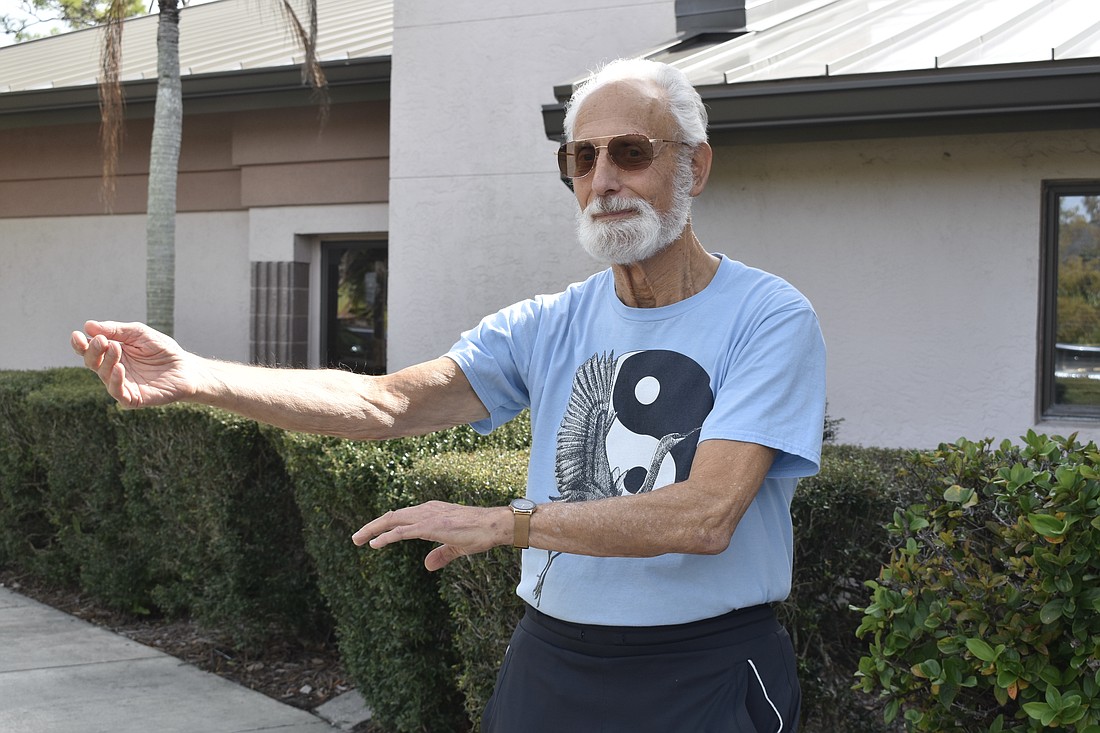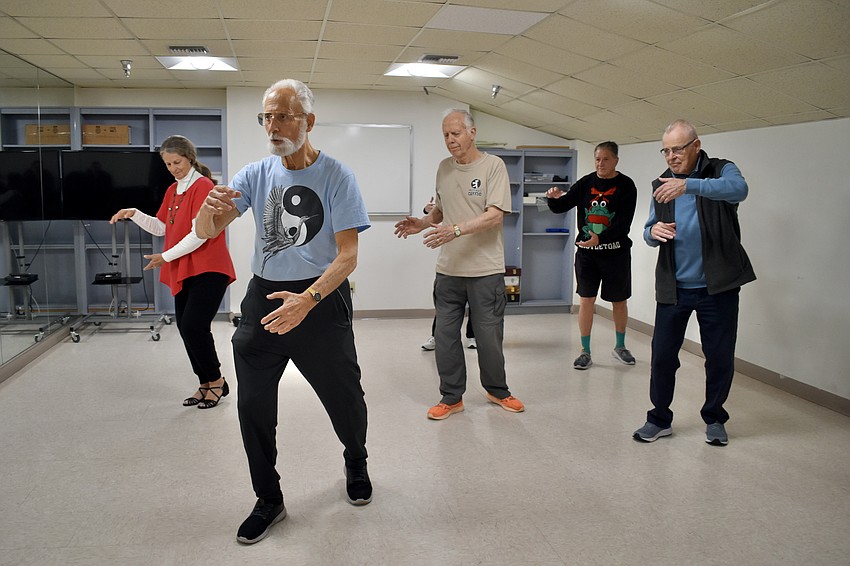- April 30, 2025
-
-
Loading

Loading

When Dr. Marty Reichgut attended his 55-year high school reunion, one of his former classmates remarked that he appeared to be in good shape.
Reichgut’s reply was that he did a lot of tai chi.
Although the classmate was initially skeptical that the martial art, which focuses on slow, continuous, flowing movements and breathing, was the reason for Reichgut’s physical fitness, Reichgut decided to give a demonstration.
He took the classmate on a walk across the room at a normal pace, then did so again at a slower one.
Indeed, the classmate found himself more tired than he had expected.
A full 24-form (24 movement) tai chi sequence, performed at an eight- or nine-minute pace, is the metabolic equivalent of a two-and-a-half mile brisk walk, said Reichgut, a retired medical doctor.
“Now think about that. I don't care what the weather is. I don't need any special equipment. I only need (a little) space, and best of all, it only takes me eight or nine minutes to do my 2.5-mile brisk walk,” he said.
Reichgut, who is 85, teaches three classes back to back at Senior Friendship Centers in Sarasota each week, in addition to four other classes, three of which are also back to back, at its Venice location. He calls the experience safe because of its slow speed. The movements of the art are well suited to seniors, he said, and people can even practice tai chi in chairs.
“There are people that walk in with canes, and I notice some of them start coming in without the canes, and people use walkers, and they can do chair tai chi,” he said.
Although today, the practice of tai chi is an indispensable part of Reichgut’s life, it was multiple strokes of good luck that brought him to the art.
One was a having a friend who had been working for a Canadian company that imported straw pocketbooks from China, and with whom he had the chance to visit the country in the early 1980s.
While staying at the Peace Hotel in Shanghai, he woke up in the mornings to find thousands of people in their 80s and 90s standing on the rooftops of buildings, twirling on one foot in perfect synchronization.
It was the first time he’d even seen tai chi, and it certainly left an impression.
When he returned home to Connecticut, he told the owner of a Chinese restaurant he frequented how amazing the tai chi in China had been, to which the owner replied that he would train Reichgut, which he did for two years.
The good fortune continued with what Reichgut calls one of the luckiest things that ever happened to him.
Grandmaster Aiping Cheng, a world-class tai chi artist from China, hoping for her teenage daughter to attend an American college, took up residence in his neighborhood.
Cheng had held a position on the China National Wushu Team and was among the performers who demonstrated on the White House lawn for President Nixon in 1974, after he opened relations with China.
Reichgut quickly connected with her, and went on to work with her for 18 to 19 years, two to three of which he spent as a student.
Reichgut describes her as "unbelivably capable."
“She was tough, when it came to learning tai chi, and she was really very social at other times,” he said.
Cheng was teaching a class at the recreation center in Guilford, Connecticut, and had moved to Milford to establish the Aiping Tai Chi school, asking Reichgut to take over her classes in Guilford.
“It was just an incredible opportunity, and it was also rewarding to me to know that I could have improved to the point where I was considered an asset at her school,” he said.

For the rest of his time with the school, he was an instructor, and taught classes on behalf of the school at the West Haven VA Medical Center to veterans with PTSD; at offices of General Electric and United States Surgical Corporation; at an adult education program in Orange, Connecticut; and at a Milford, Connecticut, senior residence.
Tai chi resulted in a change in Reichgut's life; the former urologist said it was important for managing the stress that came with his profession.
“The most important thing was that I could control my emotions, that I could control my reactions to things, that I could manage the stress that physicians were under all the time, and that’s really the most important thing," he said. “It’s a martial art. It's a way to defend yourself physically, but it's also a way to defend yourself emotionally and psychologically.”
In fact, by now having learned 300 to 350 moves, he said the art has made him able to move in certain ways that he could not as a teenager.
“I wasn't nearly as coordinated; if you asked me to stand on one foot and twirl around, it probably wouldn’t have worked so well,” he said.
Likewise, he said although tai chi is beneficial for all ages, helping with issues like focus and temperament, one of its major benefits for seniors is fall prevention.
However, he also said it allows people to control aspects of their body they have been told they cannot, like their pulse, breathing rate and blood pressure.
Despite his history involved in the art, he encourages people to work at their own pace, rather than comparing themselves to a grandmaster.
“Compare yourself to, 'How am I doing in the third or fourth lesson, as compared to how I was doing in the first lesson,' and notice that your balance is better. And notice that you're more relaxed. And notice that even though you're learning something new, you can focus more clearly," he said.